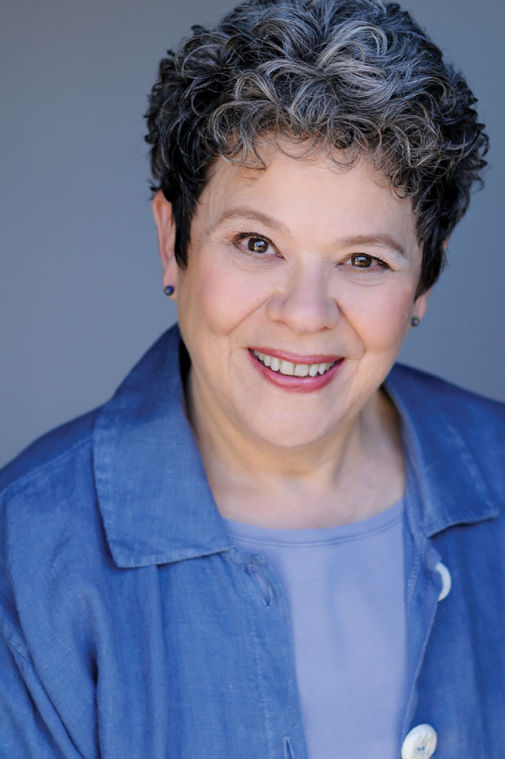Head of New Jewish Theatre reflects on seasons past and future
Published December 26, 2013
Kathleen Sitzer has led the New Jewish Theater since its inception in 1997. She has been an active member of the St. Louis theater community for 35 years and has appeared on the stages of numerous local companies, including (the now-defunct) Theatre Project Company, Black Rep, St. Louis Shakespeare, Ozark Actors and NJT. She has written and performed one-woman shows, directed and done commercial, industrial, film and radio broadcast work. Under her leadership, NJT and its actors and staff have won numerous Kevin Kline and St. Louis Theater Circle Awards.
The Jewish Light caught up with Sitzer in the midst of NJT’s current production of “Hannah Senesh,” which has been receiving standing ovations and numerous sell-outs during its run.
What has surprised you most during your years as artistic director of the New Jewish Theatre? Did you expect to be at the helm for 17 seasons?
I am continually surprised by how many actors, directors, designers and others clamor to work for NJT. We must be doing something right, although I’m not always sure what attracts them. In the beginning, I had no idea how long this ‘gig’ would last, but I am thrilled that we have become a mainstay of the cultural community and happy to continue to helm it.
Which productions gave you and your NJT associates the greatest satisfaction, and why?
It’s hard to pick just a show or two in response to this question. I guess I would say that as a rule of thumb, the productions which have given us the greatest satisfaction have been the most challenging, either because of technical requirements or content. Those might include “Lebensraum,” “The Disputation,” “Hearts,” “Unexpected Tenderness,” “Via Dolorosa,” “Women’s Minyan,” “Kindertransport,” “Awake and Sing!” “The Immigrant” and ‘’Way to Heaven.” The satisfaction has come from sticking to our principles to present productions with important things to say and to do so in a way that honors the content.
How have you handled plays with controversial subject matter, such as “Via Dolorosa,” which some might find too critical of Israel?
For the most part, when presenting a controversial play, we try to counter any blow back by wrapping the production in a lot of educational opportunities, such as panels and talk backs. In this way we have taken a pro-active approach and have been able to deflect much criticism before it landed.
Has the new venue in the refurbished Marvin and Helene Wool building and the NJT performance and audience space made a substantial difference to your operations and capacities?
The new Wool Theatre has increased our capacity by 25 percent. It has also allowed us to be much more expansive in our scenic and lighting values, all to the benefit of he production. Of course, all of this has increased production expenses.
Has the NJT grown in terms of audiences over the past 17 seasons? Have you had much success in attracting younger audiences?
We were on a huge growth trajectory for the first 10 to 12 years. We have since slowed down and begun to settle into a pattern. However, like most “traditional” theaters, we have been tremendously challenged in attracting younger audiences.
Is there a growing body of plays with solid Jewish content occurring in North America (and elsewhere)? Have there been more ‘new’ plays, or mostly repeats of the established classics?
The number of new plays with solid Jewish content is astounding and grows every year. However it is important to us to present the full spectrum, which includes many classics, such as some of Arthur Miller’s works. NJT presented Miller’s “Broken Glass” in a previous season, and will present “The Price” March 20-April 6 this season.
Who would you regard as standouts among playwrights doing Jewish-content plays?
I think the strongest of the current playwrights writing plays with Jewish content is Donald Margulies. We have done a number of his plays in our 17 years. Also in the running are Jim Sherman (“Door to Door,” “Jacob and Jack,” etc.), Alfred Uhry and Jeff Sweet, among others.
Has the Jewish theater movement grown nationally? Is there a formal network where you can exchange ideas with artistic directors from other communities?
There is an international organization that we are a part of, the Association for Jewish Theatre. We have an annual conference, which is an excellent opportunity to gather with other artistic directors and exchange ideas and scripts. It is also an opportunity to preview new scripts by lesser-known playwrights.
Any hints of what we might expect of a unique nature for your “chai” anniversary season?
We are in the planning stages for our “chai” season, and have some pretty firm ideas. But obviously it is still a bit early to announce anything. However, in keeping with this significant anniversary, I will say that it is a life-affirming season. Patrons should look for an early announcement regarding the beginning of the season.














